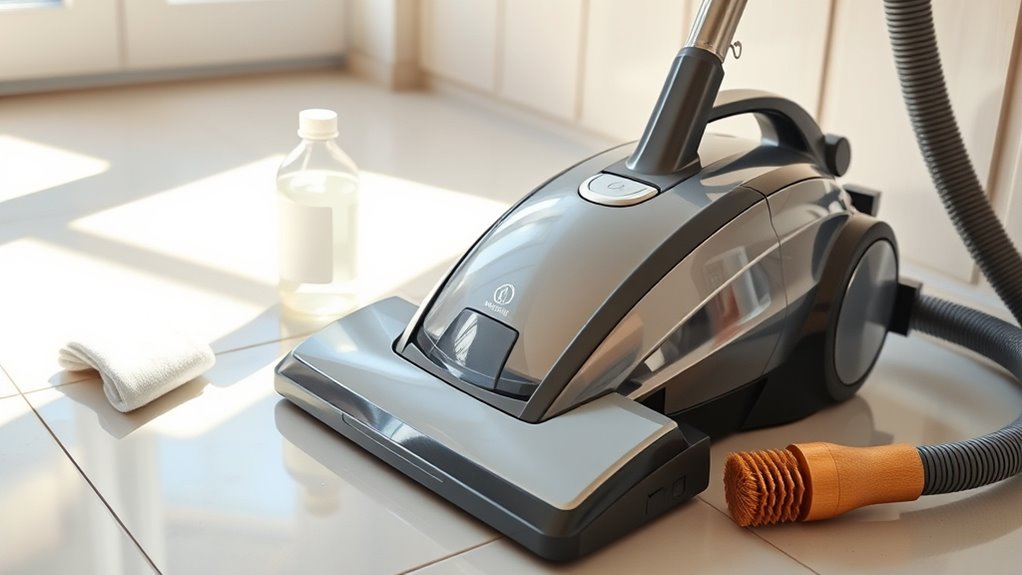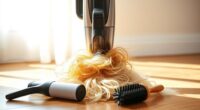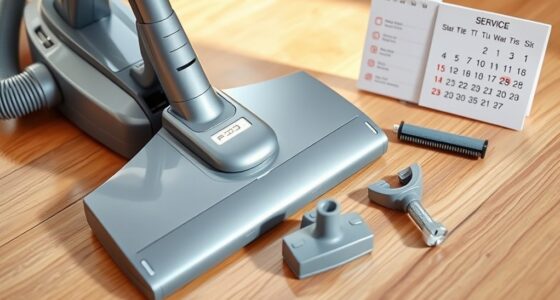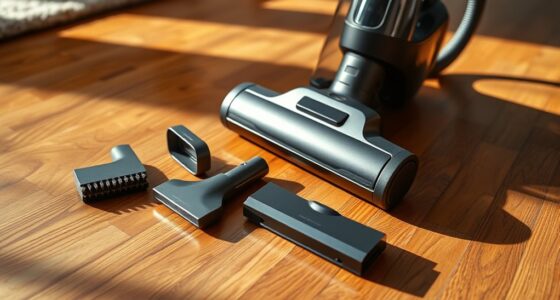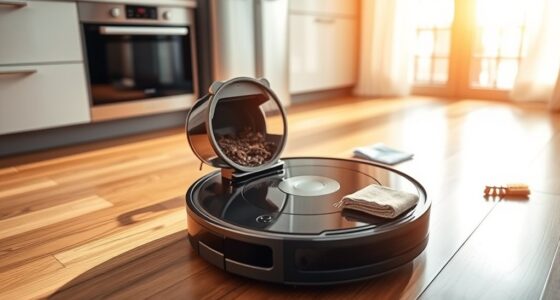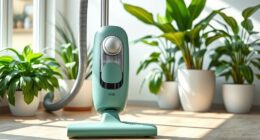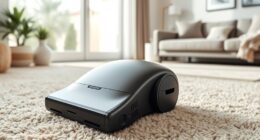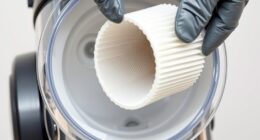To prevent mold and mildew in your vacuum cleaner, regularly maintain it by emptying dust bins and cleaning or replacing filters. Make sure all parts are completely dry before reassembling, and store your vacuum in a well-ventilated area. Keeping humidity levels below 50% is essential, so use a hygrometer to monitor moisture. Don’t forget to disinfect with hot water and vinegar. For more detailed tips on proper care, you’ll want to keep exploring.
Key Takeaways
- Regularly empty the dust bin and clean or replace filters to prevent moisture buildup.
- Always ensure all detachable parts are completely dry before reassembling the vacuum.
- Store your vacuum in a dry, well-ventilated area to inhibit mold growth.
- Use a vinegar and water mixture to disinfect interior surfaces periodically.
- Monitor indoor humidity levels to keep them below 50% for optimal conditions.
Importance of Regular Maintenance
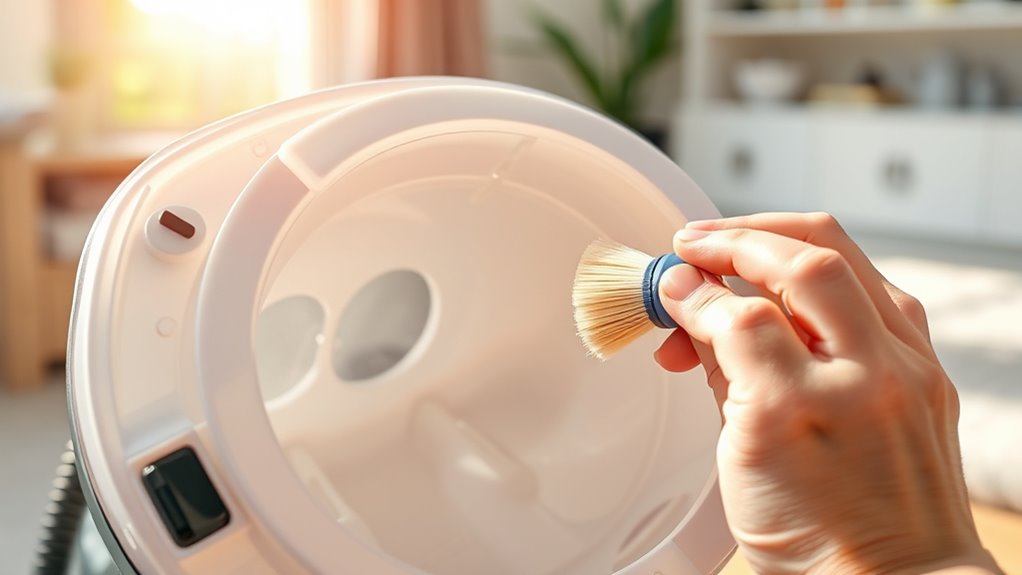
When you neglect regular maintenance of your vacuum cleaner, you risk creating an environment ripe for mold growth. Regular maintenance is essential for preventing moisture buildup that leads to mold.
Start by emptying dust bins frequently and changing or cleaning filters as needed. This simple step can greatly reduce moisture retention.
Cleaning your vacuum with a mixture of hot water and vinegar or rubbing alcohol helps disinfect the canister and brush rolls, eliminating any existing mold.
Store your vacuum in a dry, well-ventilated area to further minimize humidity exposure.
Routine inspections for clogs and debris in hoses and filters guarantee proper airflow, preventing mold proliferation.
Proper Drying Techniques
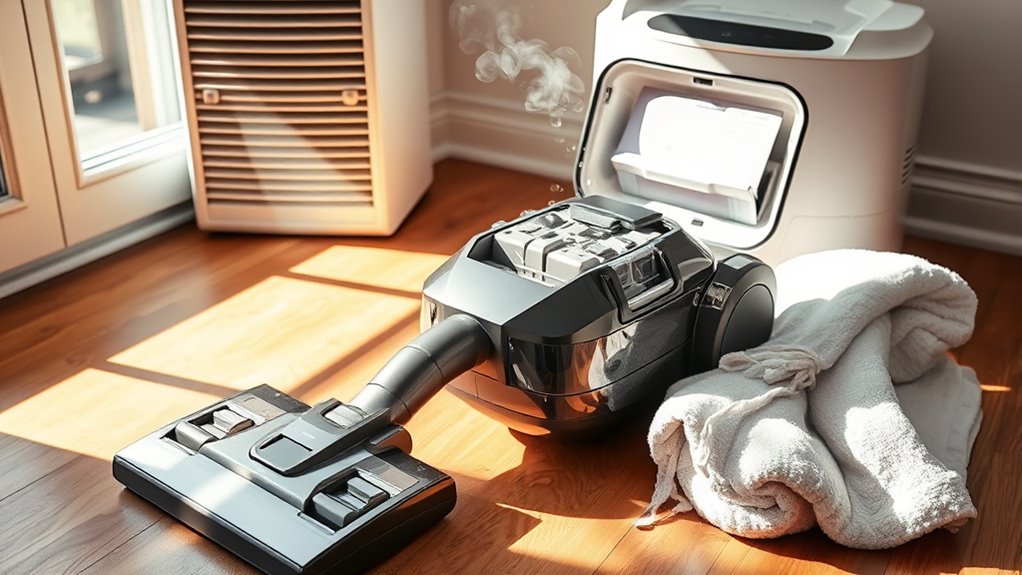
To effectively prevent mold in your vacuum cleaner, proper drying techniques are essential after cleaning. Make certain all detachable parts, like the canister and filters, are completely dry before reassembling. Air dry these components in a well-ventilated area to avoid moisture buildup. Consider using a fan or dehumidifier to keep humidity levels below 50%, which deters mold growth. If you’ve cleaned up damp materials, dry the vacuum within 24-48 hours to prevent mold spores from taking hold. Regularly inspect and clean internal components, guaranteeing no wet debris remains.
| Technique | Purpose |
|---|---|
| Air Dry | Prevents moisture buildup |
| Use a Dehumidifier | Reduces humidity levels |
| Dry within 24-48 hrs | Minimizes mold spore growth |
| Inspect Components | Guarantees no damp materials left |
| Keep Well-Ventilated | Promotes airflow and drying |
Safe Storage Practices
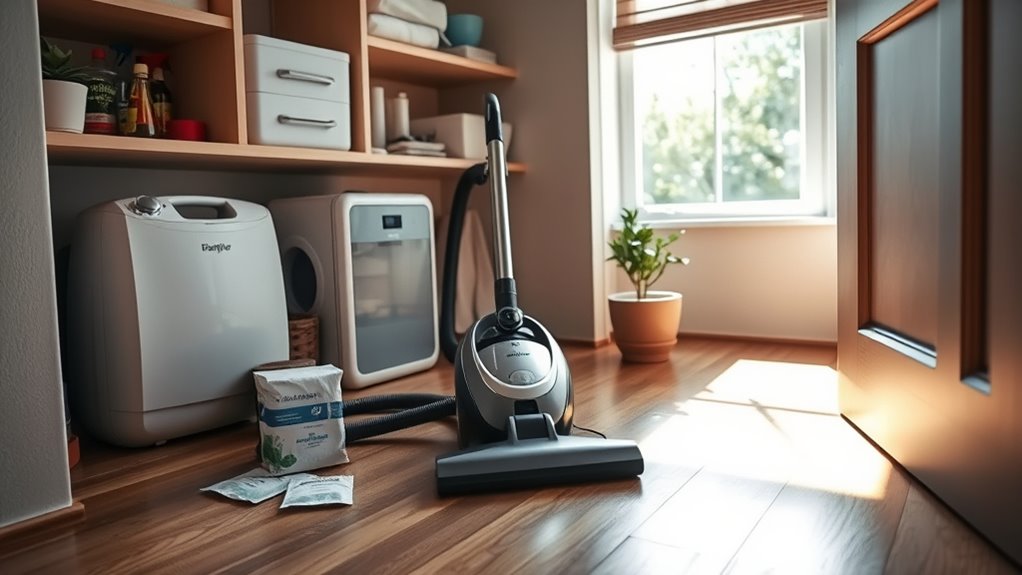
Storing your vacuum cleaner properly is essential for preventing mold growth. Always keep it in a dry, well-ventilated area to minimize moisture accumulation that encourages mildew.
Avoid dark, enclosed spaces; these conditions create a perfect environment for mold. Before storing, verify your vacuum is completely dry, especially after cleaning or using it on damp surfaces.
Regularly check the storage area for signs of humidity and consider using a dehumidifier to maintain ideal conditions. To further prevent moisture, think about adding odor-absorbing products like activated charcoal bags in your storage area.
Effective Cleaning Methods
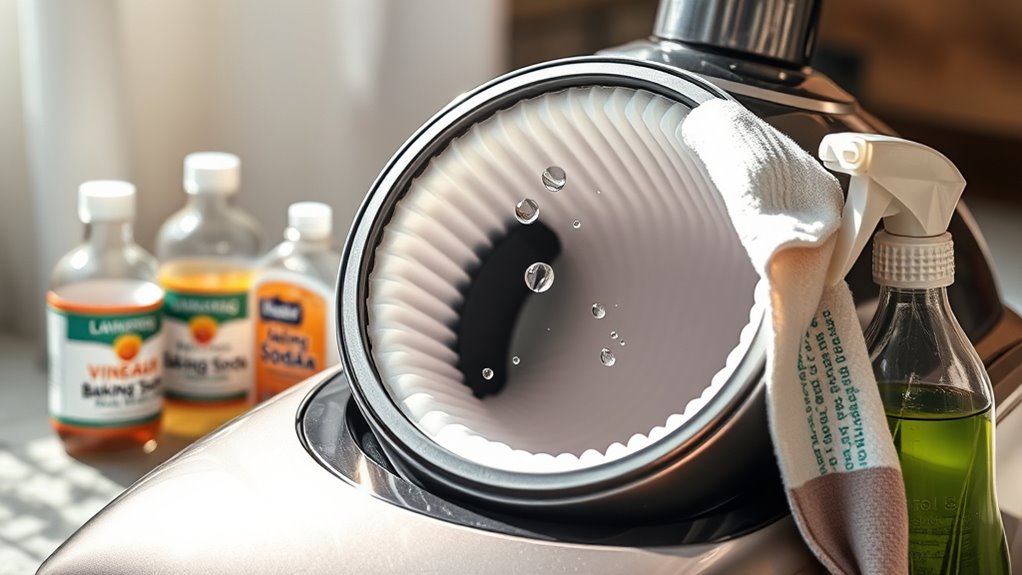
Maintaining a clean vacuum cleaner is essential for preventing mold, especially since moisture can easily accumulate during use.
Regularly empty the dust bin or replace bags after each use to reduce moisture buildup. Clean or replace filters according to the manufacturer’s guidelines, as clogged filters can trap moisture and enable mold growth.
After vacuuming, let your vacuum air out in a well-ventilated area to minimize humidity inside the machine. To further combat mold, use a mixture of white vinegar and water to wipe down interior surfaces, as vinegar has natural mold-killing properties.
Finally, always store your vacuum in a dry location with good air circulation, ensuring it dries completely to protect against mold and mildew.
Monitoring Humidity Levels
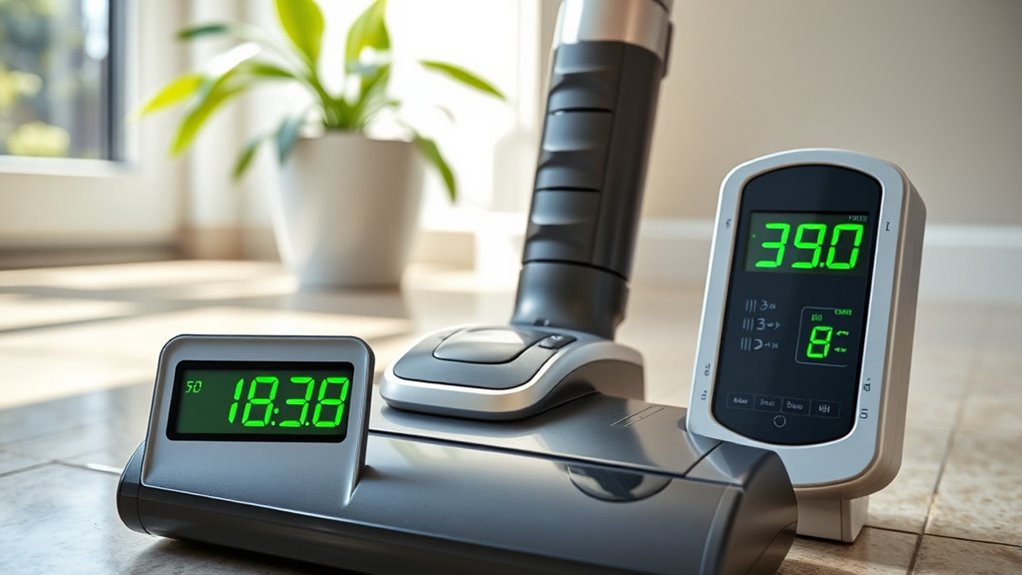
Keeping your vacuum cleaner clean is just one part of the puzzle when it comes to preventing mold. Monitoring humidity levels in your home is essential since excess moisture creates a breeding ground for mold and mildew.
Aim to maintain indoor humidity below 50% to keep your vacuum cleaner free from spores. Use a hygrometer to check humidity regularly, allowing you to make timely adjustments with a dehumidifier or improve ventilation when needed. The U.S. EPA notes that many buildings have damp areas where mold thrives, so be proactive. Additionally, keep moisture-prone areas like bathrooms and kitchens clean to support overall humidity control. Moreover, understanding the harmful pollutants in wood smoke can help underscore the importance of maintaining a dry environment to mitigate health risks associated with mold growth. Regular fire safety regulations can also ensure that your home’s environment remains safe from the risk of both fire and mold.
Frequently Asked Questions
What Kills Mold in a Vacuum?
To kill mold in your vacuum, use a solution of white vinegar or hydrogen peroxide, both of which effectively eliminate mold due to their antifungal properties.
Regularly disinfecting with rubbing alcohol helps destroy mold spores, especially in damp areas.
Clean the filters and canister with hot soapy water to remove dirt and moisture.
For added effectiveness, include a few drops of tea tree oil in your cleaning routine to enhance mold-fighting power.
How to Disinfect the Inside of a Vacuum Cleaner?
To disinfect the inside of your vacuum cleaner, start by unplugging it.
Remove the dust bin or bag and wash it with hot, soapy water.
Wipe down the base and surfaces with rubbing alcohol on a cotton pad to kill germs.
For hard-to-reach areas, use a mixture of white vinegar or hydrogen peroxide.
Finally, make sure everything is completely dry before reassembling to maintain a clean environment inside your vacuum.
What Can I Put in a Vacuum to Smell Better?
To make your vacuum smell better, try adding a capful of vacuum-safe deodorizing beads to the bag or canister.
You can also sprinkle a bit of baking soda inside before you start cleaning; it absorbs odors effectively.
If you prefer a more natural scent, place a cotton ball with essential oils, like lavender or lemon, in the bag.
Remember to use products specifically designed for vacuums to avoid damaging them.
How to Permanently Get Rid of Mold and Mildew?
Mold and mildew can feel like unwelcome guests that just won’t leave! To permanently banish them, start by keeping your space dry and well-ventilated.
Regularly clean surfaces with a vinegar solution to eliminate spores. Don’t forget to declutter, as stagnant areas invite mold.
Control humidity levels below 50% and fix leaks promptly.
Finally, make sure your home gets plenty of sunlight; those rays can help keep mold at bay!
Conclusion
By keeping your vacuum cleaner as fresh as a spring morning, you can fend off mold and mildew. Regular maintenance is your shield, while proper drying techniques are the sun that banishes moisture. Storing it right is like tucking it into a cozy bed, and effective cleaning methods work like a gentle breeze, sweeping away the remnants of dirt. So, keep an eye on humidity levels, and your vacuum will glide through your home, mold-free and ready for action!
